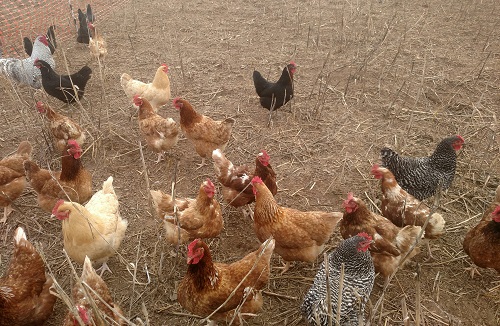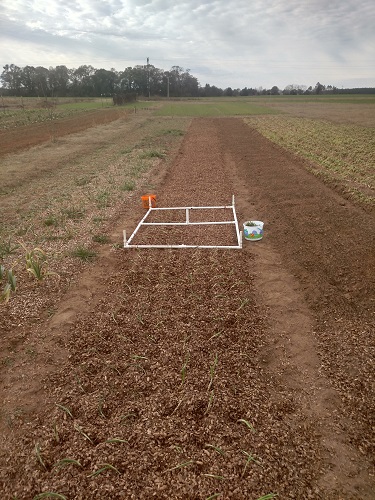The Weblog

Our goal is 100% Customer Satisfaction…comments, questions or concerns always welcome!
www.Facebook.com/MarketAtDothan

January 27, 2018 Market Newsletter

This Week’s Newsletter:
Groundhog Day
In Season
Market Chit Chat
Grower Notes
WHAT WILL HE SEE?
Groundhog Day is less than a week away – meaning a certain groundhog’s name is on everybody’s lips. But how much do you really know about Punxsutawney Phil, the great weather predictor? Here’s are 10 “facts” to add to your groundhog trivia.
1. Phil’s full name is a mouthful. The groundhog’s name is Punxsutawney Phil, Seer of Seers, Sage of Sages, Prognosticator of Prognosticators and Weather Prophet Extraordinary.
2. Phil is fat. Punxsutawney Phil weighs about 20 pounds and is 22 inches long, while the average groundhog weighs 12-15 pounds and is 20 inches long.
3. Phil is one old groundhog. Phil is 127 years old, supposedly. The average groundhog lives to be between 6-8 years, but Phil takes a magical elixir every summer to extend his lifespan. The elixir also changes his appearance (much like the Doctor in “Doctor Who”), which explains why Phil may be grey one year and a youthful brown the next. Alas, the elixir does not work on humans. “We’ve tried, it just makes them fat and bald,” said Ron Ploucha, Stump Warden of the Inner Circle of the Groundhog Club and co-handler of Phil. “If you saw some of our Inner Circle members you can tell the ones that tried.”
4. Phil has a wife. Well, make that Phil has had many wives. While Phil has an extended lifespan, his wives do not partake in the elixir so they pass away like normal groundhogs do. Phil always finds love again, though. “He’s probably had more wives than Hugh Hefner.” Ploucha said. Phil’s current wife is called Phyllis – of course.
5. Phil does not have kids. While there is nothing wrong with Phil reproductively (we asked), Phil has no children – he and his wife decided they are really too busy to raise a family. But that doesn’t mean he does not love kids. “He considers everybody his kids, being 127 years old,” Ploucha said.
6. Phil was not in “Groundhog Day.” Phil had a full schedule and was not able to partake in the filming of the movie. In the Bill Murray movie he is played by a groundhog named Scooter – who bit the actor three times during filming. Phil was Murray’s first choice for the role. “He’s treated like royalty and is very well-behaved. A true professional,” the actor told The Philadelphia Inquirer in 1993. “So when they couldn’t get him – a creature who has been hand-raised since birth and is very tame – what did they do? They went out into the woods and caught this Scooter, a groundhog who hated my guts from day one.”
7. Phil loves granola bars. Oat and honey granola bars are Phil’s favorite food, according to Ploucha – in particular Nature Valley ones.
8. Phil has his own car. It’s called the Philmobile and it’s little bus that houses members of the Inner Circle. Phil has a special seat on the outside, so he can be seen on parades.
9. Phil plays dead, occasionally. Oftentimes during summer parades, crowds will panic as the Philmobile draws through. That’s because they will see Phil lying flat on his back, legs in the air looking dead. But he isn’t, this is just how groundhogs cool off, according to Ploucha. One tap on the glass and Phil turns himself the right way round again.
10. Phil doesn’t cause the weather. He just predicts it. “Some people get upset when he calls for six more weeks of winter,” Ploucha said. "But it’s not his fault that he sees that coming.
BONE BROTH
If you missed it our Market Discussion Pageref had a lot of talk about Bone Broth last week. With it’s many benefits and this being the middle of one of the worst cold/flu seasons on record it is indeed a timely topic. We hope you’ll take advantage of the high quality bones Market At Dothan offers through our various meat vendors.
Here is some additional information that should be useful:
Factor #1 That Makes Great Bone Broth: Animal’s Upbringing When deciding how to fuel my body, I always ask where my fuel came from and how it came to be. Chances are, if you are here reading this then you and I have something in common. It’s no secret that what the animal eats, we eat. This doesn’t just apply to meat. Bones contain marrow, and marrow in turn pretty much contains the essence of our being.
If we’re healthy, that’s great but if we’re sick, our marrow is sick. The same goes for animals. The whole idea is that we’re extracting all this healthy good stuff from the animal and using it as both a food and a medicine for our bodies. Believe it or not, this all matters on a molecular level, where everything that makes you you is working hard to maintain your optimal health as efficiently as possible. If the animal was factory farmed, ate garbage and didn’t see a pasture a day in its life, you won’t be doing your body any favors in the long run by using its bones.
Pardon my soapbox, but supporting the ranchers and farmers that raise pastured animals and grow organic produce is the only way we’ll ever see a change in our current food system. You want better access to healthy and sustainably raised meats and fresh produce? Then find and support a farm. I’ve seen numerous farms and ranches here in Southern California grow rapidly under the support of enthusiastic communities looking towards a better future in food.

Factor #2 That Makes Great Bone Broth: Animal’s Age That’s right. Animals are no different from us in that their bones and joints wear down and degrade over time, reducing the amount of connective tissue and consequently reducing the amount of gelatin that will end up in your broth.
The younger the animal, the more gelatinous your broth will be. Veal bones, joints, feet and necks would yield the most gelatin, as these animals are butchered very young. You can usually find veal bones at a local butcher for a decent price. Stocks made from veal are a chef’s secret weapon in the kitchen, taking everything from soups and sauces to risottos and braised meats to the next level.
Factor #3 That Makes Great Bone Broth: Bone Type This is where most people run into trouble. In my experience the most commercially available bones are usually beef or veal femurs. Femurs are great as they contain a ton of marrow but very little collagen. You want a good mix of bones, joints and feet. I suggest using a 1:1:1 ratio of bones, joints and feet. This will almost guarantee you achieve that victorious gel.
Just remember to always use joints and feet, this is where you will find the most collagen. If you can’t find all of these, go ahead and make your broth with whatever you can get your hands on, you’ll still benefit greatly from the added vitamins and nutrients.
Factor #4 That Makes Great Bone Broth: Bone to Water Ratio Whether it’s in a crockpot or on your stove, add water just to cover the bones, and no more. This is where a lot of folks think they’ve messed up. You’ve spent all those hours simmering away, finally cooling and refrigerating your liquid gold only to wake up in the morning to find no jiggle. You haven’t been defeated! Simply bring your broth back up to a gentle simmer and let evaporation take over. Reduce your broth by an inch or so, cool and refrigerate. If it’s still not jiggling, repeat the process.
A combination of things could have happened here – too much water, bones from sick animals, or you simply didn’t let it simmer long enough. In most cases, the gelatin simply isn’t concentrated enough to give your broth a Jello-like consistency. This is OKAY. Your broth is still loaded with plenty of good stuff.
Try not to get so caught up on the aesthetics. I see people everyday crying out for help because their broth didn’t gel, as if the broth gods are smiting their attempt at glory.
Factor #5 That Makes Great Bone Broth: Time The beautiful thing about making broth is that once started, it requires very little attention.
The biggest issue here is not letting your broth simmer long enough. We simmer our beef broth for 48 hours and 24 hours for our chicken. Simmering for multiple days is a great way to really get everything out of the bones.
Something we do, and that I highly suggest, is to wait until you have 6-8 hours left to add your vegetables or leafy greens, such as parsley or leaves on your celery. This will prevent any bitter or burnt tastes from being imparted into your broth. The vegetables can only be cooked for so long before they begin to break down, giving your broth and undesirable and often burnt flavor.
It only takes 8 or so hours at a simmer to extract the nutrients and flavor from them, anyway. Anything much longer than this and the vegetables become sponges, soaking up all your hard-earned nutrients.
In my opinion, those are the most important things to keep in mind when making bone broth. As with most things, the more you make it the better you will get. And the better you will get at noticing all these little idiosyncrasies during the process, like waiting to add your veggies until later in the process. It took me several burnt, bitter and off-flavored batches before I finally started figuring out at what times to add what ingredients.
Adapted from stupideasypaleo.com
MARKET CHITCHAT
Don’t forget to mark your calendar for February 17! Viki Richter will be teaching about making your own seasoning and spice blends. Viki has YEARS of experience making CLEAN HEALTHY mixes of all sorts that don’t contain chemical additives and MSG found in most commercially available spice blends. For people wanting to transition to a healthier diet, this is an easy and effective way to get started. Class will be held in the Greenhouse at Dothan Nurseries.
THIS WEEK’S GROWER NOTES
We have the best Growers in the Wiregrass! Please learn more about them on our Grower Page.
AVALON FARMS:

The chickens are working hard at cultivating Garden 1. They have shredded the cover crop and dug up every weed. I’m hoping they are leaving enough nitrogen rich droppings to supply that garden’s needs. Keeps them happy and less work for me. Win-win.

This week has been the adventure of onion plants being lost in the snow storm in Texas, which delayed their arrival here, delaying me sticking them in the ground. But I did get started on them! I plant onions in a 6 inch grid, with 6 plants to the row. That makes 200 rows per 100 foot bed, 1200 onions per bed. One bed down and my knees need a break. :)
Did you know onions are “Day Length” sensitive? This means their ability to bulb is impacted by the number of hours of daylight they have. Onions are divided into long-day, intermediate-day and short-day. Day length is determined by the latitude of the region. Dothan’s latitude is 32.22, putting us in the short-day range (short-day is latitudes 25-35). Short-day onions will begin the bulbing process when day length reaches 10-12 hours.
I realize this is science, but I swear our summer days are looooo-ng. Especially when there’s work to be done. Just seems crazy that our summer days are “short”.
BAIN HOME GARDENS: Hello Market Friends!
Today we thought we would talk about something that has been on our minds & that is seed storage. You see, since we have expanded the garden and have plans to do so even more, we have been collecting & saving seeds. Some of these have been saved from our own garden others have been purchased from resectable sources. So here comes the issue, WHERE DO YOU PUT THEM?!
Over the course of nine months, our seed storage system has already changed several times but we think we have finally settled on a system that works for our family.

It was very inexpensive being that it was designed from recycled items just hanging around the house! For a video of how it was made and tips on seed storage check out our Facebook page!
We shared Mache Corn Salad this week for the first time on the market this week Exciting! There are a few more offerings that will be up for grabs this week… from our family to yours!
HAWKINS HOMESTEAD FARM: Chicken, chicken, chicken! Chicken is here! Finally right? We know! We posted a few last week that hubby said we’re ready to go and they went quick. So be sure to grab yours! Thank you to everyone who ordered. If you have questions on how our birds are fed, raised, or housed, check out our Facebook page:
https://facebook.com/HawkinsHomesteadFarm.
We have a great article pinned at the top for everyone to check out.
If you’re not on Facebook, you can still see everything you ever wanted to know about our urban farm on our website:
www.hawkinshomesteadfarm.com
It’s completely brand new and we’re so thankful and happy that it actually works seeing that I had no idea how to create a website. Needless to say there was a lot of research and contacts to tech support (they might be tired of me). It’s not fancy or anything, but it’s ours and if you’d like you can follow our blog on there too.
Did you know that The Market at Dothan has a Group Discussion Page?ref Well now you do. Be sure to join, if you haven’t. It’s a great way for all of us to stay up to date and connected to each other.
HORTONS FARM: We have been overwhelmed with the response to our Elderberry Syrup Kits. There is a history to them that I’ve shared with a few people. Some years ago I was asked by our Market Manager to make Elderberry Syrup for our customers. It looked easy enough to make but because of cottage food laws I declined because it required refrigeration. WHERE WAS MY BRAIN??? Kits take some time and some measuring to do well, (and some of you know about complete instructions too!), but it never occurred to me that it would be simple for anyone else to make as well. And now here we are.

I just ordered another 5 lb of organic elderberries as the many kits we took to Dothan yesterday are GONE. Our own Kelly H of St. Andrews Soap Company took the ones left over from yesterday’s table sales to her shop (Kitty Couture if you’re not familiar with them) and messaged me a little bit ago that they’re out and need more.
So once again I’m sitting on pins and needles hoping my order gets here in time!
MAYIM FARMS: We’re back!
After a wonderful trip to the Southern Sustainable Agriculture Working Group Conference in Chattanooga we are back and starting many seedlings.
We are also announcing our next mushroom growing workshop on February 24 at 10am.
If you missed the last one or if you want to come to another, we will be demonstrating some in unique ways of cultivating mushrooms easily in your home and on logs outside. Get the details on our FB page or on www.mayimfarm.com.
Due to the extreme cold fresh Moringa will not be available but we have plenty of dried, powdered and capsules of powdered and crushed seeds.
If you are having trouble with congestion check out and sign up for Carole’s blog, she has just published a DIY congestion formula you can make in the kitchen.
Also we are listing our new Sweet Gum Tincture in this flu season. Compare to Tamiflu, has the same constituent and it’s all natural.
FOOTNOTES
We would love to hear from you! If you have a favorite recipe, want to write a product review, have an idea or request for an article or information, let us know! You can reply to this newsletter or write marketatdothan@gmail.com.
Order Saturday 5pm to Tuesday 5pm weekly for Pickup the following Friday
Dothan Pickup: Dothan Nurseries, 1300 Montgomery Highway, Dothan, AL 36303
Daleville Pickup: Daleville Chamber of Commerce Office
Our Website: marketatdothan.locallygrown.net
Our Email: marketatdothan@gmail.com
On Facebook: www.facebook.com/MarketatDothan
Join our Online Discussions! www.facebook.com/groups/MarketatDothanDiscussion
Be sure to use our hashtag! #marketatdothan
We thank you for your interest and support of our efforts to bring you the healthiest, the freshest and the most delicious locally-produced foods possible!